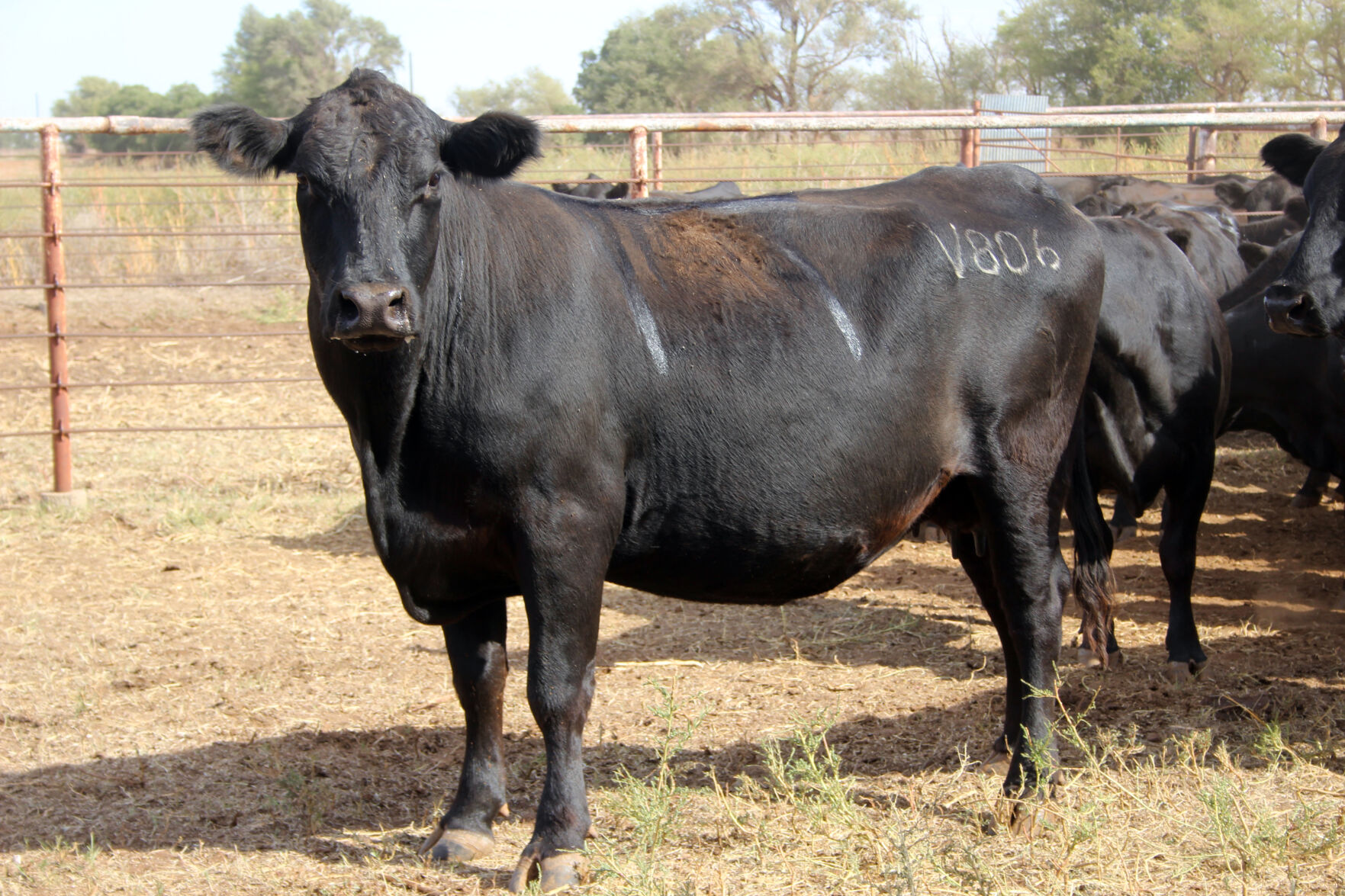Hay prices and availability will be among the most significant challenges cattle raisers will face this winter. Mary Drewnoski, beef systems specialist at the University of Nebraska-Lincoln, presented on this topic during a recent webinar through Oklahoma State University.
To properly meet cow nutrient needs, producers must understand the quality of their forage and how it impacts dry matter intake. Drewnoski sorts forage into three categories—low quality, medium quality and high quality. She said low quality forage is anything less than 52% total digestible nutrients, or TDN. Corn and soybean residue fit in the low-quality category.
“You’re going to get about 1.8% of body weight for dry cows and even that varies a bit depending on feeding method,” she said.
Medium quality hay encompasses the majority of hay available and includes forage with 52 to 59% TDN. High quality hay is mostly fed to dairy cattle and is greater than 59% TDN.
Another element to consider for forages is crude protein, although there are certain limitations for this value. Drewnoski said producers often underestimate the amount of energy and protein lactating cows need.
“A mid-gestation cow needs about 11 to 12 pounds of TDN and about 1.6 pounds of crude protein,” she said. “Comparatively, a late gestation cow needs 14 pounds of TDN and 2.2 pounds of crude protein.”
Drewnoski said for a gestating cow, crude protein works well because the microbes can utilize any ruminal-available protein to fulfill the protein needs of the cow.
“When we get into early lactation, crude protein doesn’t tell you everything you need to know,” she explained. “We can be providing plenty of ruminal-available protein like in alfalfa and still not quite be meeting the needs of that cow for actual protein. Especially on young cows, this can affect breed-up.”
In drought conditions like the past year, Drewnoski suggests producers consider adding a bypass protein through cottonseed meal or dried distiller’s grain, also known as DDGs. She said even an ionophore can help meet their true protein needs.
How do different forages stack up?
Corn residue is usually about 45% TDN and ranges from 3 to 6% crude protein. Drewnoski said producers that are grinding ingredients like corn residue, soybean hay and sorghum residue should be testing for nitrates, especially if they’re not going to be coupling it with higher energy feedstuffs. When comparing corn and sorghum residue, Drewnoski pointed out that milo is actually higher in energy than corn. Sorghum residue is about 52% TDN and can even be up to 55%, and ranges from 5 to 7% crude protein.
Drewnoski said corn residue does not meet a mid-gestation cow’s need. Sorghum on the other hand can meet a late-gestation cow’s requirement. However, forages can also work together to solve this dietary equation.
“We can couple corn residue and soybean hay, for instance, to meet the needs,” Drewnoski explained.
When she reached the topic of soybeans, she was sure to note a major distinction between soybean residue and hay.
“Soybean residue is almost like sawdust, it’s only 39% TDN and 3% crude protein. It’s very woody and not very digestible. Soybean hay on the other hand is usually about 50 to 55% TDN and 14 to 20% crude protein, which is comparable to alfalfa hay’s protein content.”
So how does soybean hay compare to alfalfa?
“One of the key things with soybean hay is you really need to capture the leaf because the stem is low in energy,” Drewnoski explained. “The other thing to recognize is the pod as it fills, is actually going to add a lot of protein and energy. A mature soybean is somewhere around 40% crude protein and 20% oil, so what we see is as that plant matures, while the feed value from the forage perspective declines because the pod is filling, you actually increase in energy.”
She said the more mature the soybean plant is, the more difficult it is to get it dry, particularly the pods. If soybeans are cut late, it is common to end up with moldy hay, especially moldy pods. However, by testing the forage, producers can be confident they are not feeding moldy hay.
Sign up for HPJ Insights
Our weekly newsletter delivers the latest news straight to your inbox including breaking news, our exclusive columns and much more.
Feeding method matters
Not all feeding methods are equal when it comes to hay wastage.
“If you’re using a round bale feeder with an open bottom, you can expect 30% waste, a sheeted bottom can get it down to 20% waste and cone feeders waste about 5 to 10% waste,” Drewnoski explained. “If you’re unrolling, you’re still going to have quite a bit of waste as well.”
Additionally, she said cattle spend a lot of time trying to sort out the ingredients they prefer from the less palatable ones, making their intakes lower. Feeding processed rations on the ground can also result in 40% waste, so Drewnoski said it is worth feeding in a bunk.
Drewnoski recommends providing a supplement to corn residue, such as DDGs. She said DDGs are about 30% crude protein and most people underestimate the energy value.
“They are about 104% TDN, which is much higher than corn that’s about 84% TDN, so it is very protein- and energy-dense and we’ll need to be feeding about 4 pounds of DDGs for mid-gestation and about 5 for late gestation if you’re feeding in a bunk.”
Drewnoski advises producers to submit forage samples for testing to know the nutritional value of their feed. She recommends using a hay probe rather than grab samples to get through multiple layers and obtain a good representation of the forage.
“You should sample 15 to 20 bales from the same field that was harvested and baled at the same time,” she said. “It doesn’t cost a lot to get a hay test and the information you get back is quite valuable.”
Lacey Vilhauer can be reached at 620-227-1871 or [email protected].



